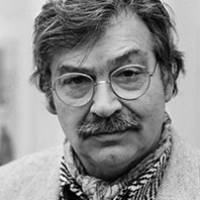(1921-2006)

Follow Karel APPEL
Karel Appel, born on April 25, 1921, in Amsterdam, was a Dutch painter and sculptor, and a co-founder of the Cobra group, a significant avant-garde art movement of the 20th century.
He studied at the Royal Academy of Fine Arts in Amsterdam from 1940 to 1943 and began exhibiting in 1946. During his training, he developed a unique style characterized by bold use of color and forms, distinguishing himself from his contemporaries. He drew influences from great masters such as Pablo Picasso, Henri Matisse, and Jean Dubuffet, incorporating their techniques and ideologies into his own artistic exploration.
He joined the Cobra movement in 1948, alongside Corneille, Constant, Asger Jorn, Jan Nieuwenhuys, and Christian Dotremont. The Cobra group, an acronym for Copenhagen, Brussels, and Amsterdam, was known for its experimental approach to art, rejecting traditional aesthetic norms and favoring spontaneous and imaginative artistic expression. Appel, in particular, was noted for his vibrant canvases where freedom of movement and an explosion of colors were ever-present.
In 1950, he moved to Paris and developed an international reputation, traveling to Mexico, the United States, Yugoslavia, and Brazil. These journeys enriched his artistic vision, allowing him to experiment with various cultures and techniques. The influence of these experiences is reflected in the diversity and originality of his works.
His first exhibition was in 1946 in Groningen, the Netherlands, marking the beginning of a prolific career. He subsequently exhibited in prestigious venues such as the Palais des Beaux-Arts in Brussels (1953), the Martha Jackson Gallery in New York (1954), the Galerie Rive Droite in Paris (1955-1956), and many others. His works were acclaimed for their vitality and ability to capture the essence of the Cobra movement.
In 1968, he exhibited at the Centre d'Art Contemporain in Paris, where his work was celebrated for its creativity and innovation. He continued to exhibit worldwide, notably at the Centraal Museum (Retrospective) in Utrecht, the Netherlands (1970), the Museum of Contemporary Art in Montreal (1972), the New York Cultural Center (1973), the Wildenstein Gallery (London), and the Fuji Television Gallery (Tokyo) in 1975, the Museo de Arte Moderno (retrospective), Mexico (1977), the Paris Art Center (1988), the National Museum of Art in Osaka, and the Hiroshima City Museum of Contemporary Art (1989), the Fundacion Juan Miró in Barcelona (1990), the National Museum of Contemporary Art in Seoul (1994), the Galerie Lelong in Paris (2003, 2009, 2011), and the Cobra Museum in Amstelveen (2005).
Known for his rebellious and innovative approach to art, Appel also worked on sculpture and ceramics projects, demonstrating his versatility as an artist. He was a source of inspiration for many young artists and played a key role in the development of modern art.
He died on May 3, 2006, in Zurich and was buried in the Père-Lachaise cemetery, leaving behind a powerful and diverse artistic legacy. His works continue to influence and inspire artists and art lovers around the world.

Secure payment
3DSecure 2.2

Free DHL Express delivery from €1,200
Carefully prepared parcel
Parcel tracking

Shipment insured
for the value of the artwork, covering theft and damages

Fairest prices
Certificate of authenticity
Two galleries in Paris
Receive an email as soon as a new artwork is added for this artist
Your message has been sent ! We will get back to you as soon as possible.
Please fill in the form if you need further information such
Please fill in your email address, an email will be sent with a link to update your password.
You can now place orders and track your orders.
To save your wishlist, you can log in or create an account :